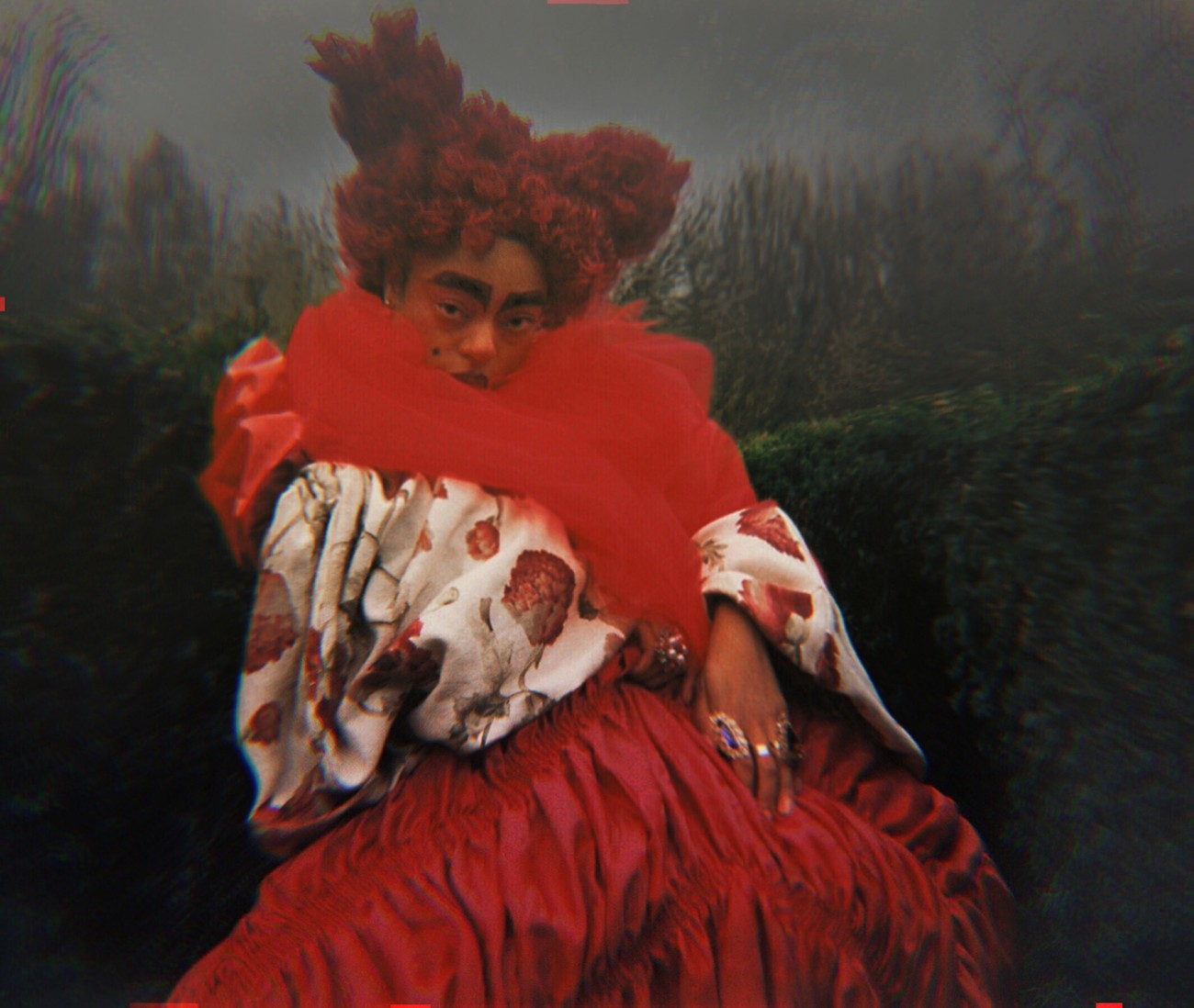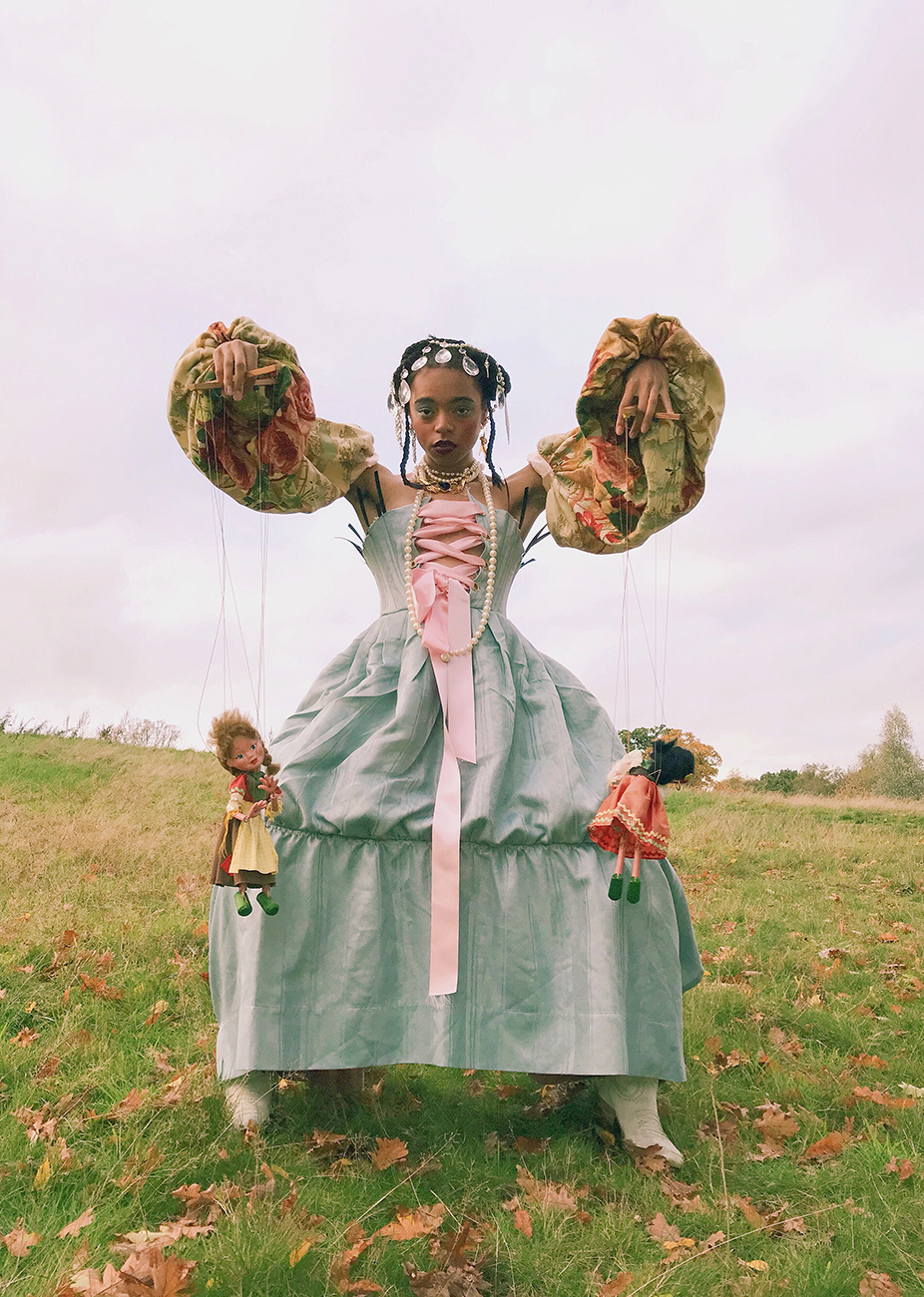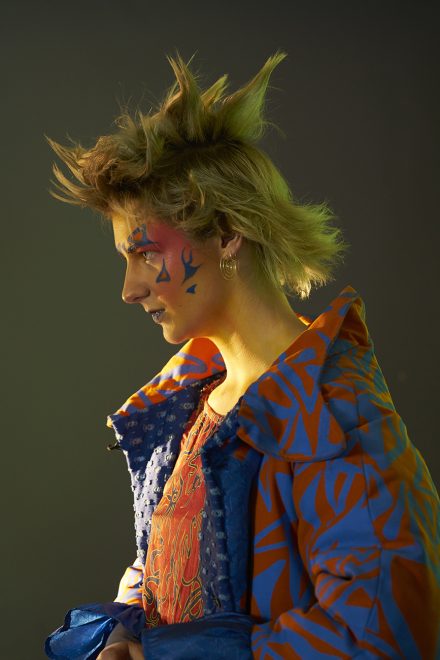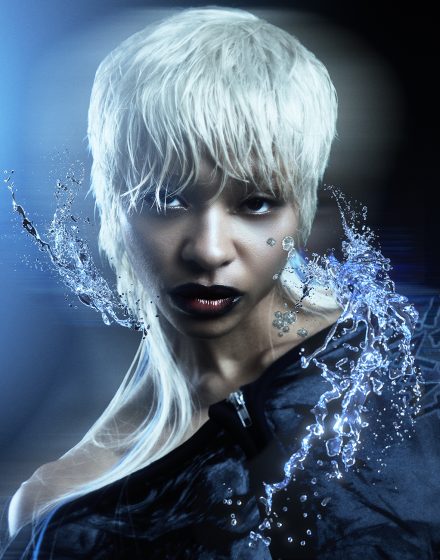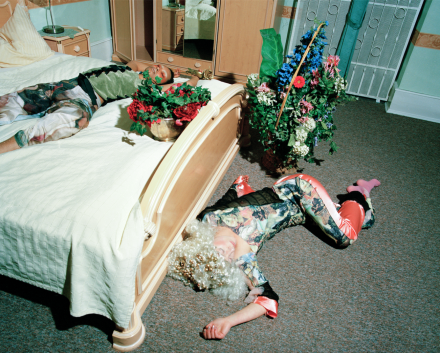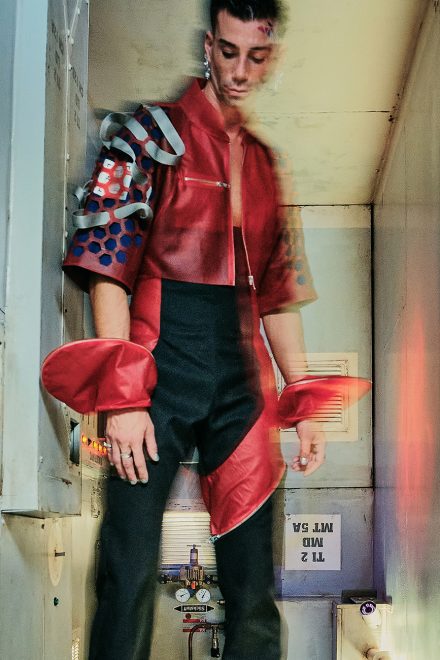Originally from Berlin, Grete Moeller is known for designing bespoke garments . After completing her fashion design studies in South African, she relocated to London, where she has been working tirelessly to build her own brand that prides itself on ethically sourcing upholstered vintage fabrics to create custom outfits that exude regality.
Moeller’s work is emotion-driven, encapsulating her own experiences of what it means to be a vulnerable woman. With this in mind, she refuses to design anything that would be considered as ‘commercially masculine’ and works exclusively with queer and non-cis male bodies.
Moeller uses textiles are a medium to empower herself and others in the fight against patriarchal structures. Ultimately, she hopes her clothing can be part of the greater mission to free the FLINTA* community from toxic masculinity and the violence it projects in our society. This explains why you can find sexuality as a running theme in all of her collections.
Maddie Magner Sugarpuff
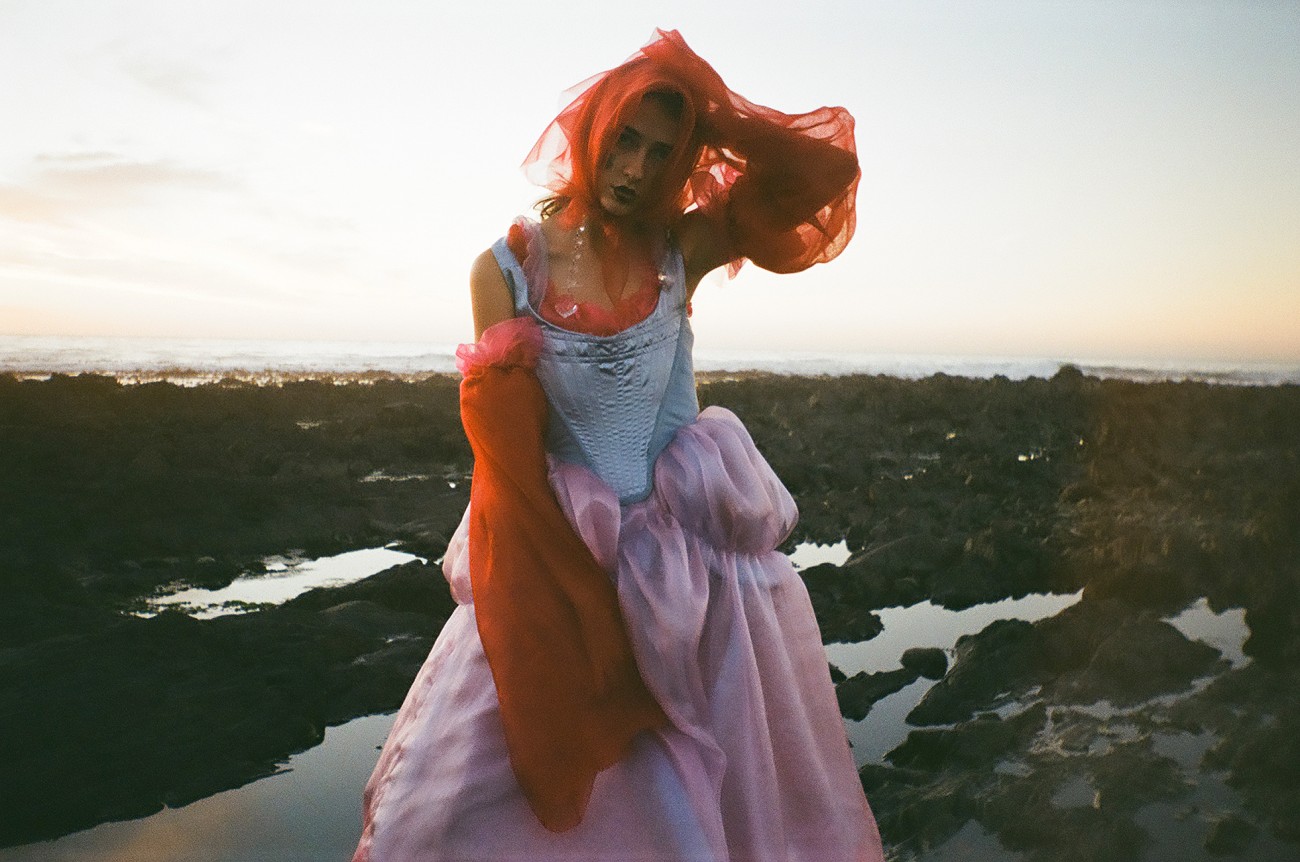
Having spent most of her adult life rooting and uprooting herself across the globe, Moeller has always struggled with concept of ‘home’ – what it means and where hers is. Captured in Cape Town, the Maddie Magner Sugarpuff editorial is a visual representation of this aching feeling of being homesick for a place that is no longer home.
Moeller layered five dresses she created from silk organza into a “giant sugarpuff”, to recreate the experience of being rapidly spun into many new places and people into clothing. “The vibrant colours are a celebration of a heart that feels a lot and that feels realness and meaningful depth”, she explained.
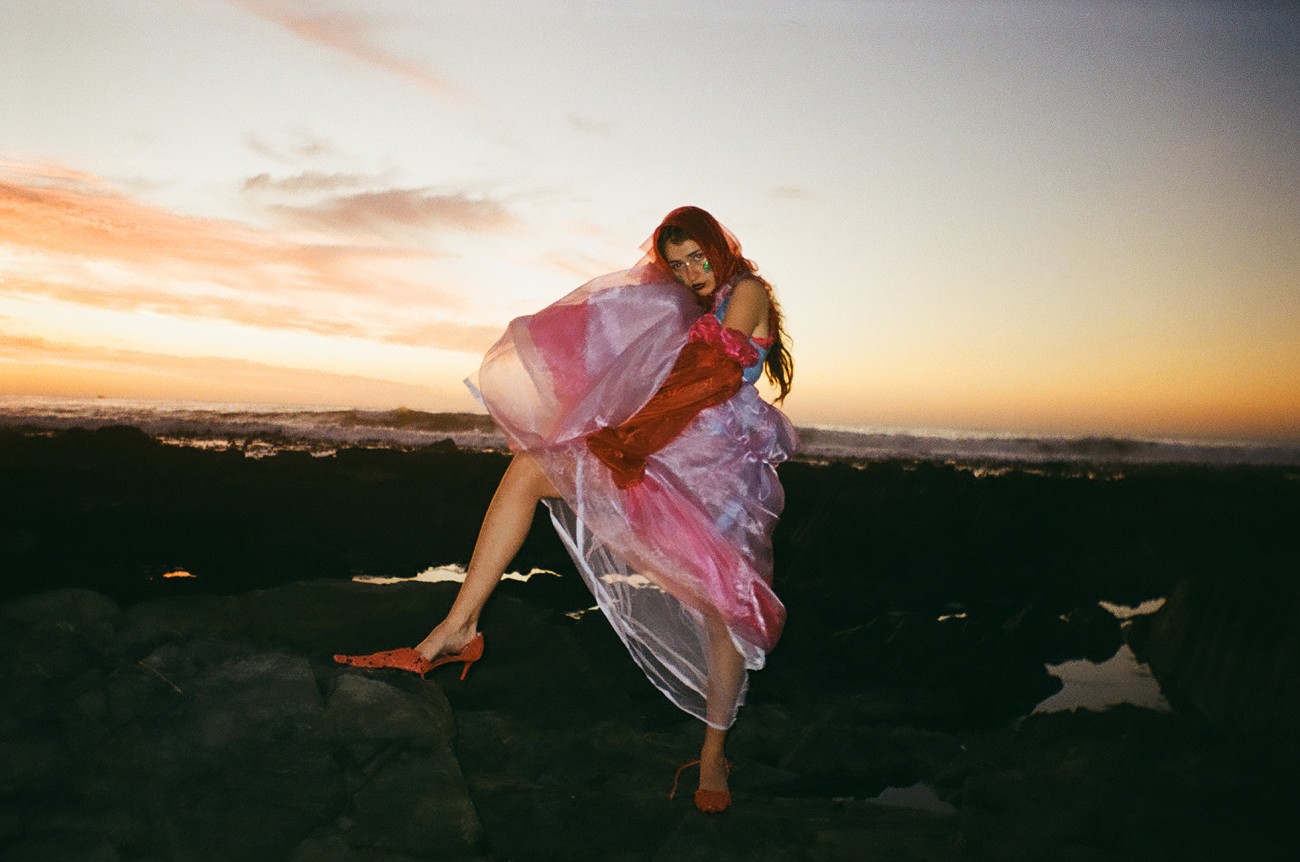
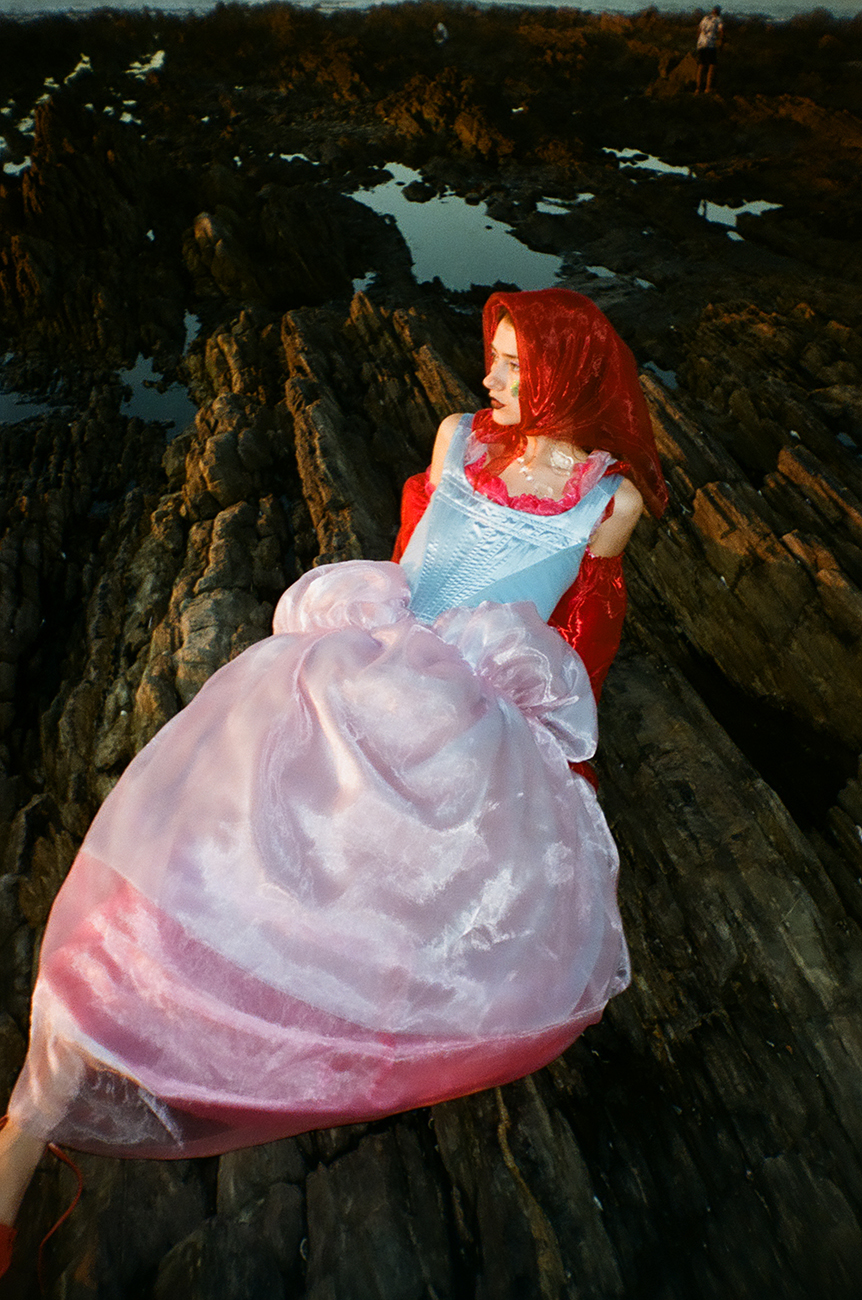
CREDITS
Fashion & Styling – Grete Moeller
Art Direction & Photography – Grete Moeller
Makeup – Grete Moeller
Model – Maddie Magner
Shoes – Cat O’Brien
My Dearest Porcelain Soul
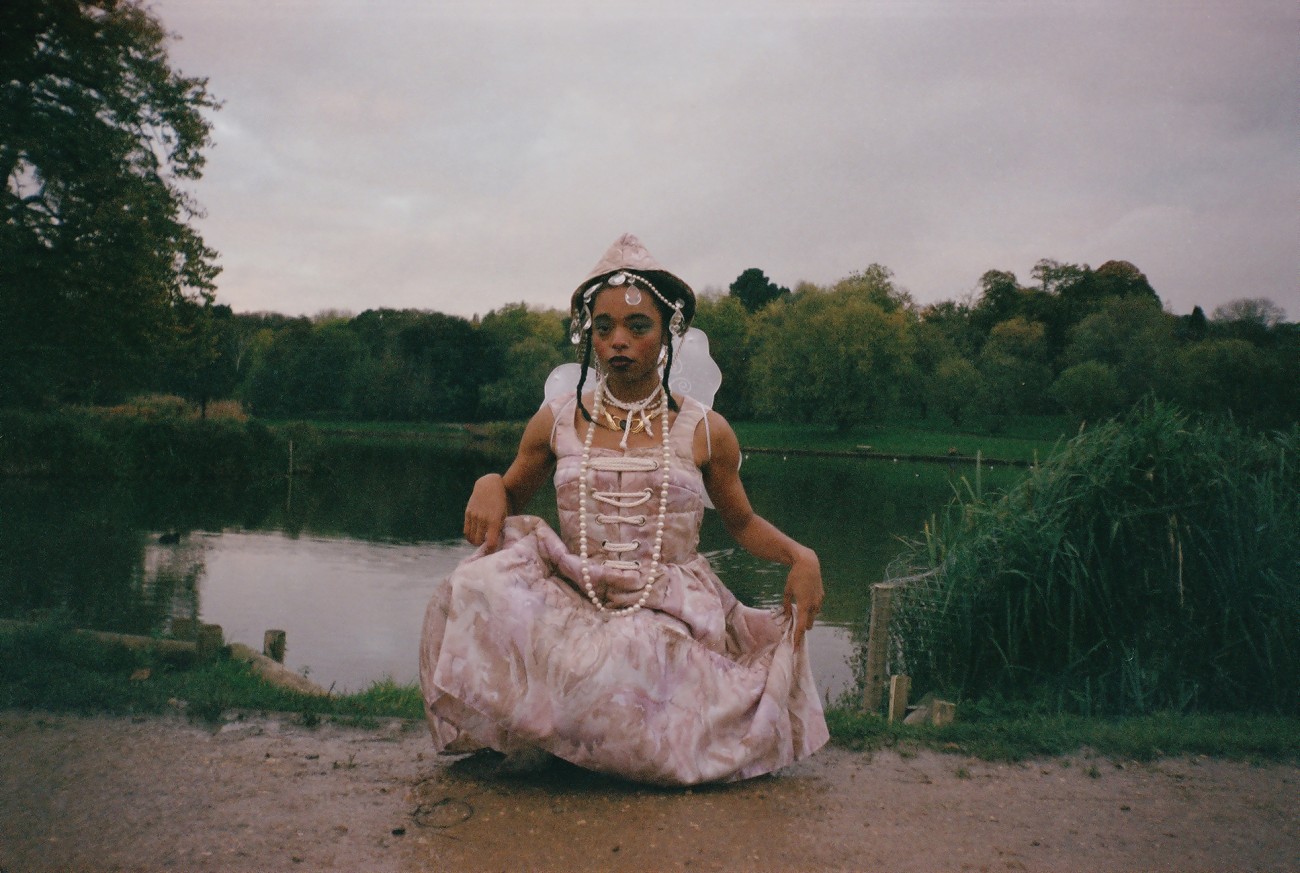
My Dear Porcelain Soul is a very personal collection that Moeller holds near to her heart. Consisting of three dresses modelled on her grandmother’s vintage silk blanket, she has named each one after the Christian Saints: Agnes, Maria and Magdalene, whose stories have been equally inspirational to her. These outfits and novel accessories are nostalgic
When creating this collection last year, she disclosed that the combination of blanket dresses and corsets were a way to make her feel beautiful whilst struggling with body dysmorphia.
She explained: “It was at the Kunsthalle Hamburg, that I was admiring the naked marble statues from ancient Greece. I was inspired by their purity and peace of mind, almost like a desexualisation of their bodies through the arts. I like thinking of femininity in that way rather than the preoccupied sexualised triggering version.”
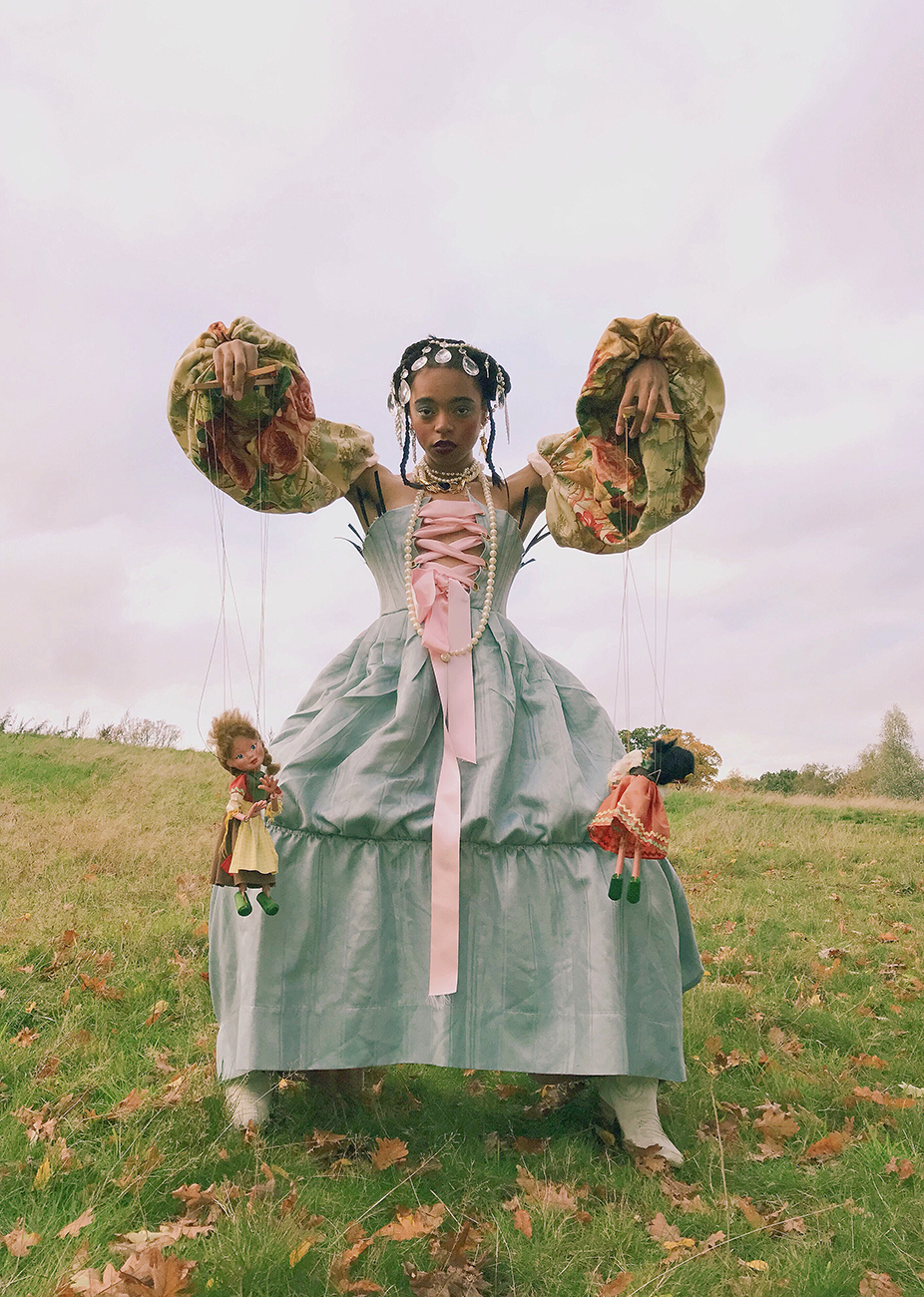
CREDITS
Art Direction & Photography – Grete Moeller
Model – Djenaba Davis-Eyo
Accessories – Stylist’s own
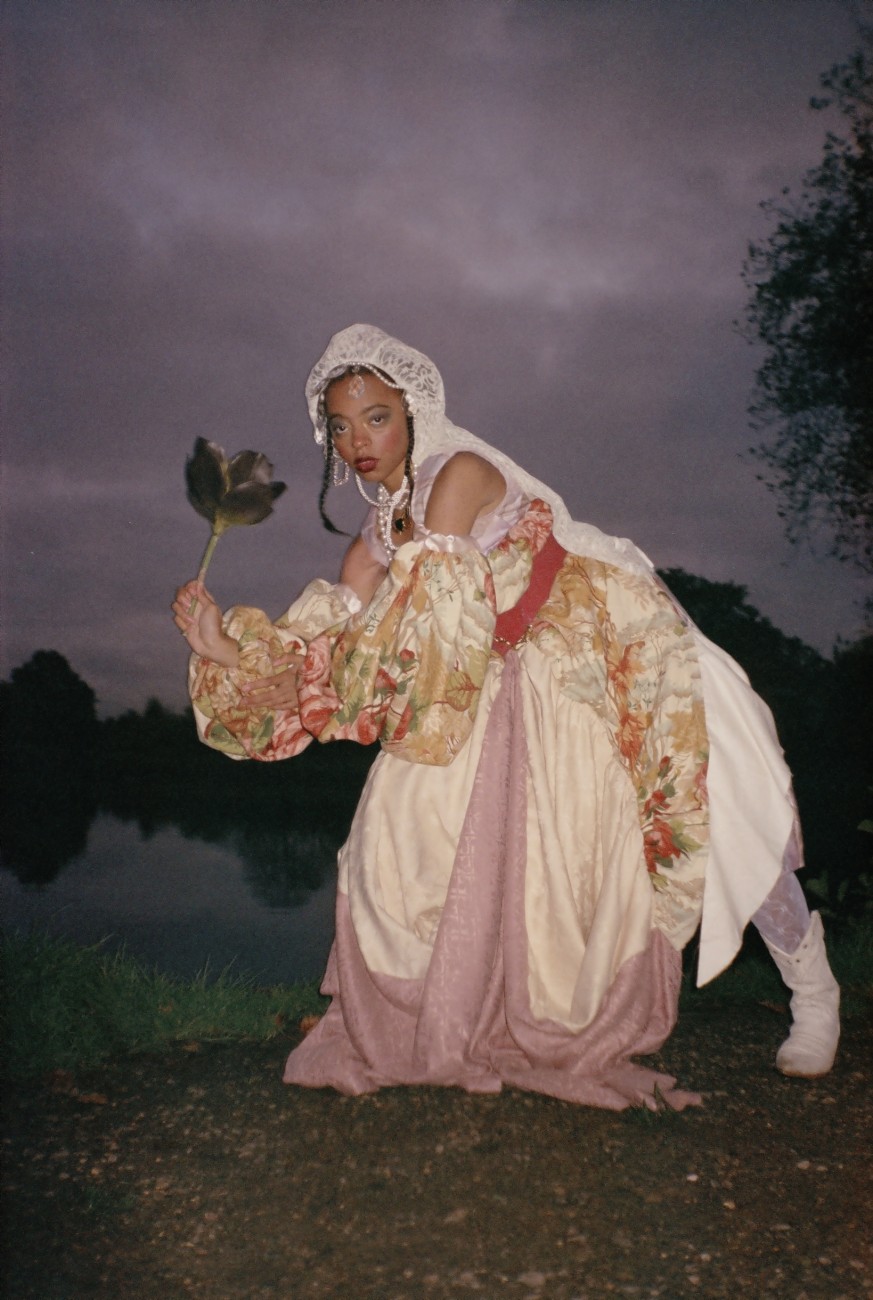
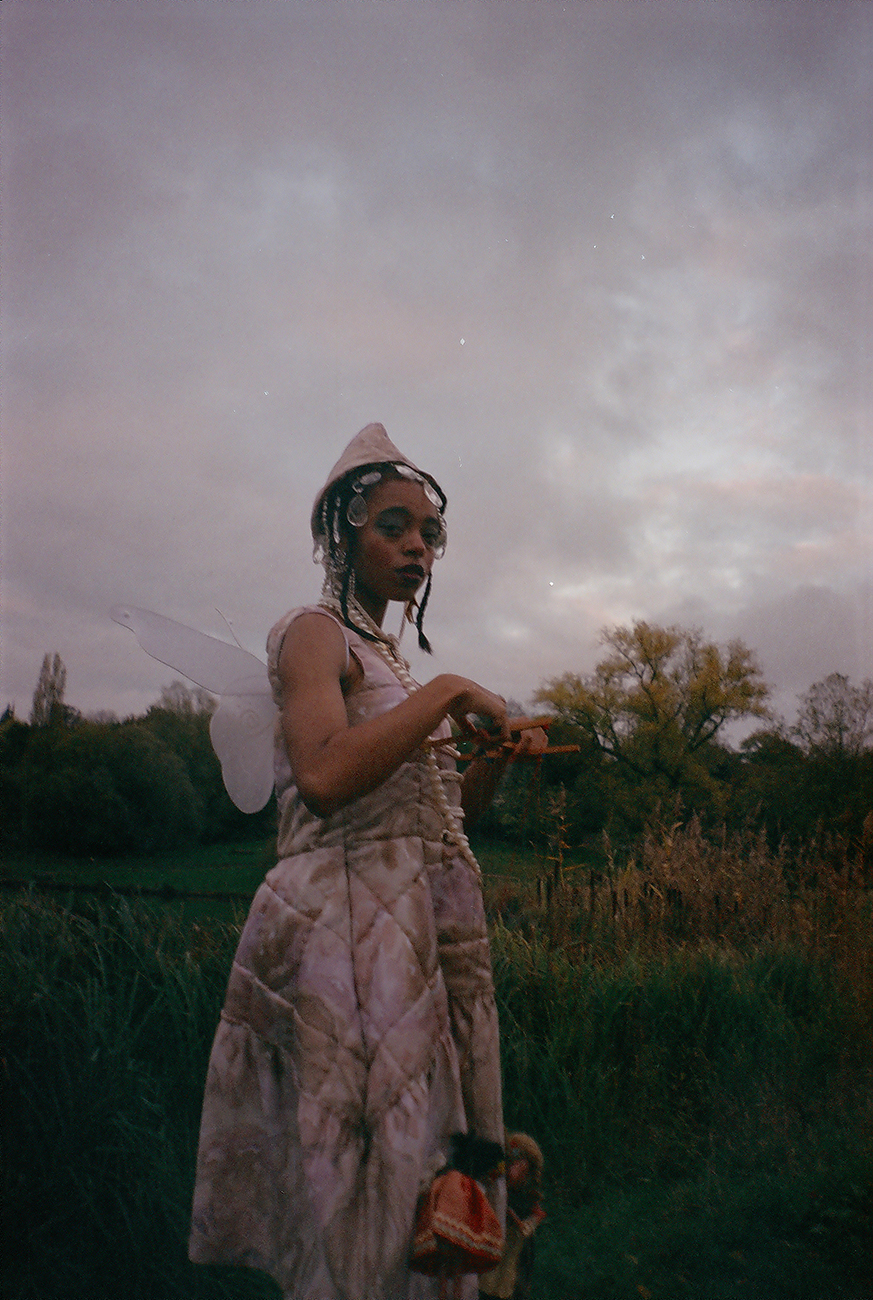
Maze Runner
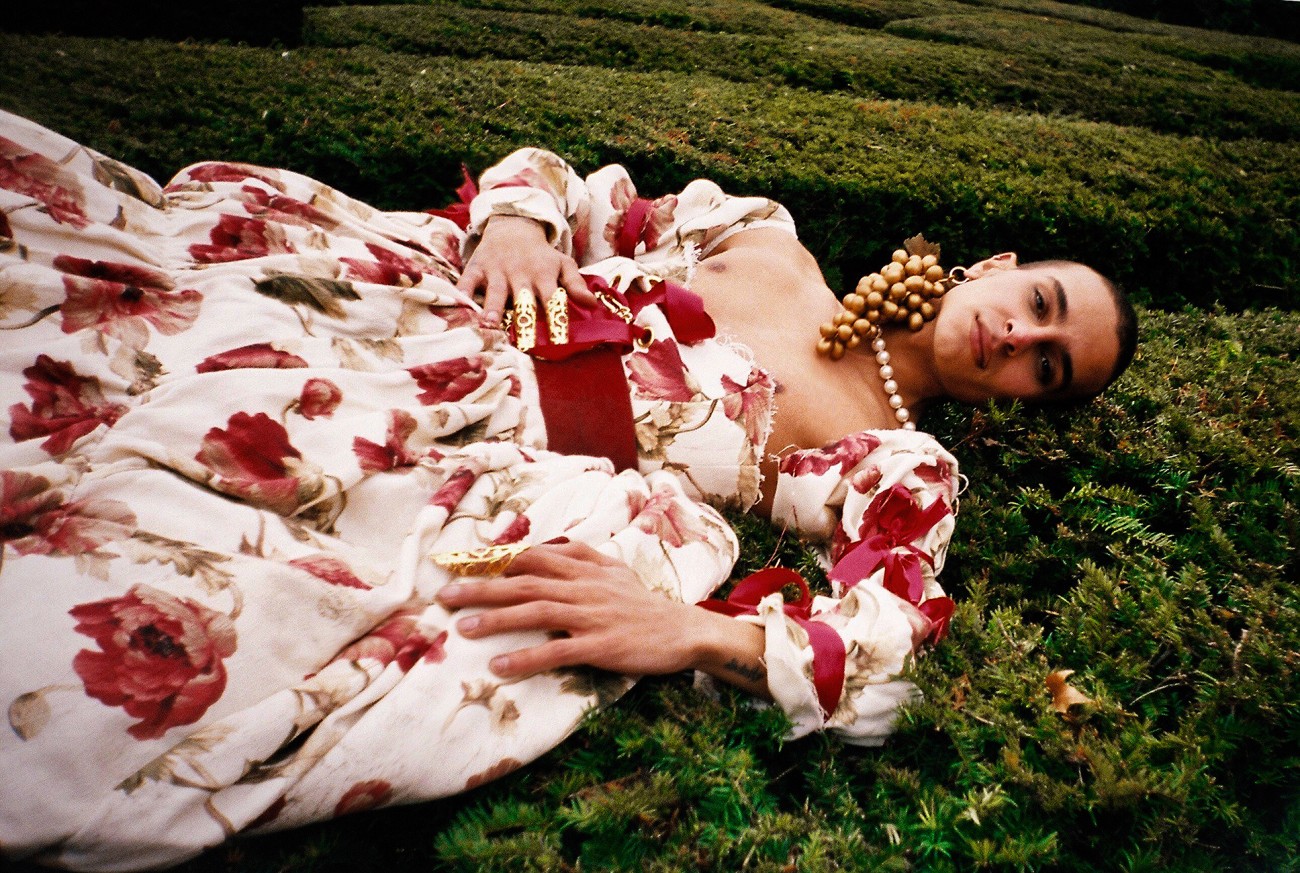
The final collection is another example of Moeller’s attempts to challenge and ultimately, erode patriarchal structures. The Maze Runner editorial transports us to a utopian, dream-like world, where queer and non-binary bodies are celebrated and adorned in gold. The maze is symbolic of the disorienting and complex rules that society places of sexuality and gender, which confine and limit the lives of women and the LGBTQ+ community.
The Maze Runner collection exudes Marie Antoinette-esque glamour, grandeur and queerness. She has sewn together second-hand, upholstered fabrics into two bespoke gowns that are the opposite of demure. The floral prints, satin ruffles and red bows are all nods to Romantic period, bold, daring and emotion-driven. Moeller wanted this editorial to inspire others to stand up against these oppressive constructs not just in fashion, but every day life.
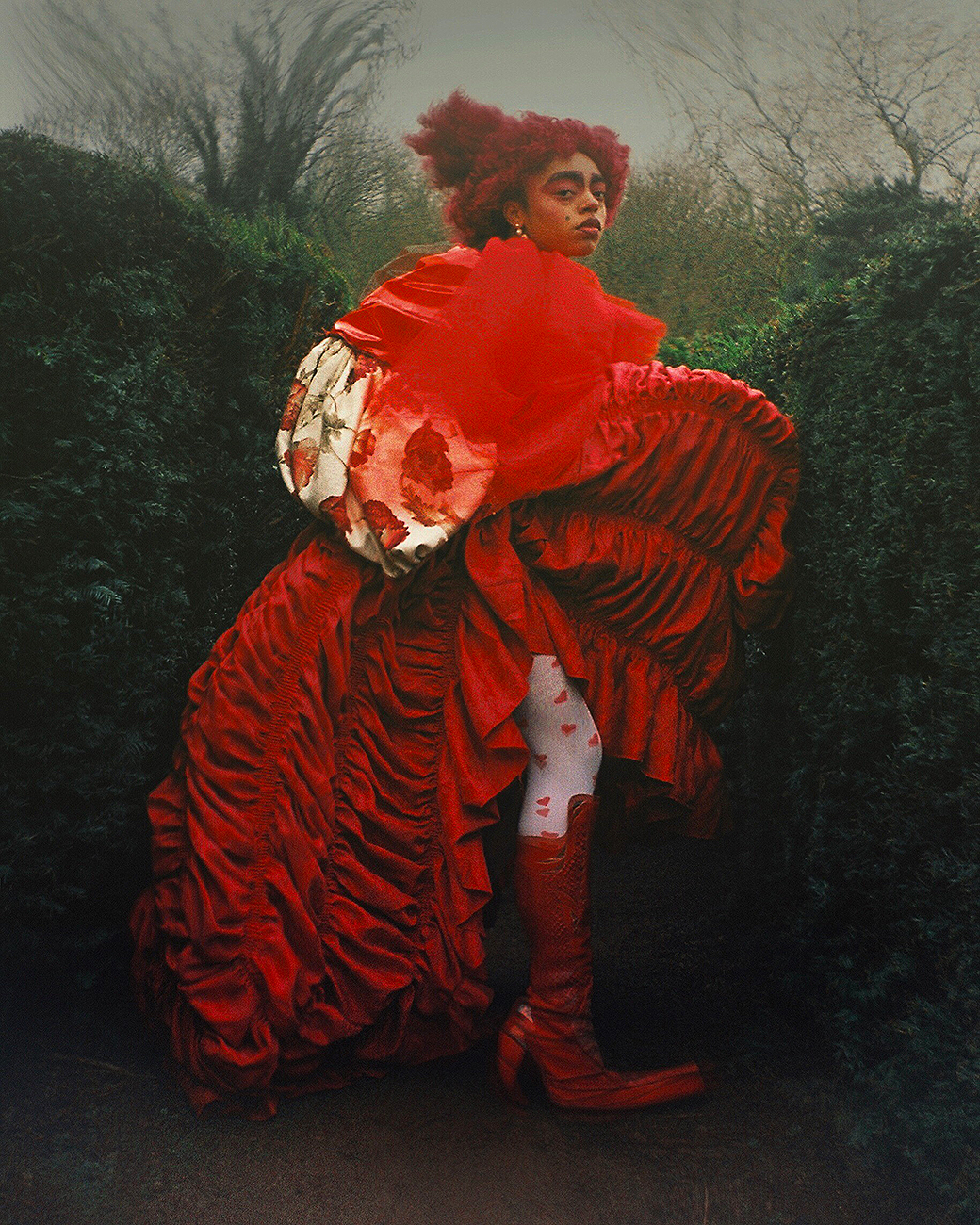
CREDITS
Art Direction & Photography – Grete Moeller
Makeup – Shagi Motez
Models – Djenaba Davis-Eyo and Shagi Motez
Shoes – Natacha Marro

